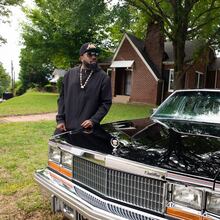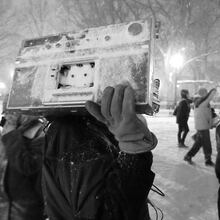MOVIE REVIEW
“Digging for Fire”
Grade: C
Starring Jake M. Johnson, Rosemarie DeWitt and Anna Kendrick. Directed by Joe Swanberg.
Rated R for language including some sexual references, drug use and brief graphic nudity. Check listings for theaters. 1 hour, 24 minutes.
Bottom line: The film's observations point to "eh"
The best thing to happen to filmmaker Joe Swanberg? His choice of cinematographer. Ben Richardson, who worked with the director on the recent Chicago projects “Drinking Buddies” and “Happy Christmas,” teams up with Swanberg again for “Digging for Fire,” which was shot on warm, pleasing 35 millimeter film in the canyons and on the beaches of Los Angeles.
The movie, the latest of Swanberg’s infidelity daydreams, moves with uneffacing assurance. It boasts a blue-chip cast clearly comfortable with improvising on (or bailing out) the script by Swanberg and the film’s star, Jake Johnson. House-sitting for a client, yoga instructor Lee (Rosemarie DeWitt) and her public school teacher husband Tim (co-writer Johnson) relocate from their west side Atwater Village flat with their 3-year-old (Jude Swanberg, son of co-writer, editor and director Swanberg) for a few weeks. The movie is about their weekend apart. With the boy off to his grandparents’ (Judith Light and Sam Elliott), Lee has plans, eventually messed up, to spend time with friends, while Tim stays behind to work on the couple’s taxes.
Lee ends up walking the beach with a charming, chivalrous stranger (Orlando Bloom) she meets in a restaurant. Tim invites his pals over for a pool party. Sam Rockwell, always a pleasure, shows up as the wild-card guest, who brings a couple of ladies (Anna Kendrick and Brie Larson), some cocaine and an eagerness to help Tim dig up some curious artifacts he finds early on in the hillside near the house. First it’s a rusty old revolver and a human bone. What lies beneath?
“Digging for Fire” uses this treasure hunt as a story hook, as its characters shoot the bull on the subjects of public versus private education, and the frustrations of married life. The semi-improvised banter isn’t bad or good; it’s simply there, and too much of it plays like outtakes for better, sharper versions of the same exchanges.
The actors save it, periodically, from itself, simply by setting a natural tone and finding some truth in an extended sketch. DeWitt is excellent as always, capturing more with a glance out a taxi window than other performers can muster with two monologues and a death scene.
But is marriage truly a matter of all compromise or zero compromise, as the characters in “Digging for Fire” take turns arguing? The truth’s in the middle, of course, and the film knows this, and there are all sorts of riches to be found in what lies between the extremes. The film itself lands in a different sort of middle, its diffident relational observations pointing straight to “eh,” followed by: Yes? And then what?



